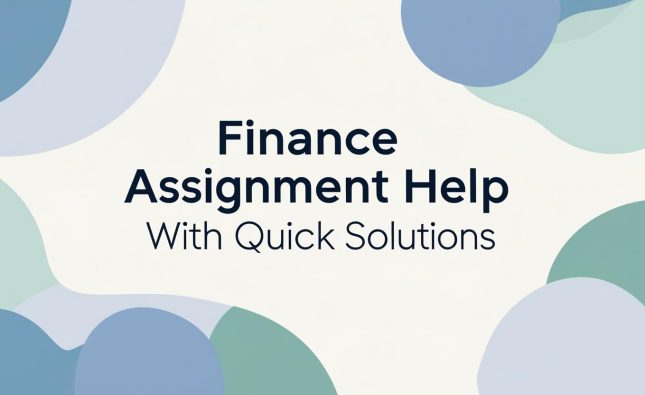
Financial technology, or fintech, has been transforming the financial industry over the past decade, bringing innovative solutions that have revolutionized the way we bank and invest. From mobile banking and blockchain to robo-advisors and peer-to-peer lending, fintech innovations have made financial services more accessible, efficient, and user-friendly. This article explores the various facets of fintech innovations, their impact on the financial landscape, and provides an analysis and comparative overview of the leading fintech solutions.
The Rise of Mobile Banking

Convenience and Accessibility
Mobile banking has redefined the banking experience by allowing users to manage their finances anytime, anywhere. Traditional banking processes that once required physical visits to a branch can now be completed with a few taps on a smartphone. This convenience has significantly increased accessibility to financial services, especially in remote and underserved regions.
Security Enhancements
Security has always been a primary concern in the financial sector. Mobile banking applications have integrated advanced security features such as biometric authentication, multi-factor authentication (MFA), and end-to-end encryption. These measures ensure that users’ financial data remains protected against unauthorized access and cyber threats.
Blockchain Technology: A Game Changer
Decentralization and Transparency
Blockchain technology, best known for powering cryptocurrencies like Bitcoin, has introduced a decentralized ledger system that enhances transparency and reduces the risk of fraud. Transactions recorded on a blockchain are immutable and visible to all participants, ensuring a high level of trust and integrity in financial dealings.
Smart Contracts
Smart contracts are self-executing contracts with the terms of the agreement directly written into code. They automatically execute and enforce the terms when predetermined conditions are met, reducing the need for intermediaries and lowering transaction costs. This innovation has wide-ranging applications in banking, insurance, and investment.
Robo-Advisors: Automated Investment Solutions
Personalized Investment Strategies
Robo-advisors use algorithms and data analysis to offer personalized investment advice and portfolio management. By assessing an individual’s risk tolerance, financial goals, and investment horizon, robo-advisors can create and manage a diversified portfolio tailored to the user’s needs.
Cost Efficiency
Compared to traditional financial advisors, robo-advisors typically charge lower fees, making professional investment management more accessible to a broader audience. This cost efficiency is particularly beneficial for novice investors or those with smaller portfolios.
Peer-to-Peer Lending: Democratizing Loans
Direct Lending Platforms
Peer-to-peer (P2P) lending platforms connect borrowers directly with lenders, bypassing traditional financial institutions. This model democratizes the lending process, often resulting in lower interest rates for borrowers and higher returns for lenders.
Risk Management
P2P lending platforms employ various risk management strategies, such as credit scoring algorithms and diversification of loan portfolios, to mitigate the risk for lenders. These measures help maintain the platform’s credibility and attract more participants.
Analysis of Leading Fintech Innovations
| Fintech Innovation | Key Features | Benefits | Challenges |
|---|---|---|---|
| Mobile Banking | Biometric authentication, MFA, 24/7 access | Increased accessibility, enhanced security | Cybersecurity risks, digital divide |
| Blockchain | Decentralization, transparency, smart contracts | Reduced fraud, lower transaction costs | Regulatory hurdles, scalability |
| Robo-Advisors | Algorithm-driven advice, personalized portfolios | Lower fees, accessible investment management | Algorithm biases, market volatility |
| P2P Lending | Direct lending, credit scoring algorithms | Lower interest rates, higher returns for lenders | Credit risk, regulatory concerns |
Comparative Overview of Fintech Solutions
| Criteria | Mobile Banking | Blockchain | Robo-Advisors | P2P Lending |
|---|---|---|---|---|
| Accessibility | High | Moderate | High | Moderate |
| Security | Advanced (biometric, MFA) | High (cryptographic) | Moderate | High (credit scoring) |
| Cost Efficiency | High | High | High | High |
| User Control | High | Very High (decentralized) | Moderate | High |
| Regulatory Environment | Stringent | Evolving | Evolving | Evolving |
| Adoption Rate | Rapid | Growing | Rapid | Growing |
Impact on the Financial Landscape
Increased Financial Inclusion
Fintech innovations have played a crucial role in enhancing financial inclusion. Mobile banking, for instance, has brought banking services to millions of unbanked individuals in developing countries. Similarly, P2P lending has provided credit access to those who might not qualify for traditional loans.
Enhanced Customer Experience
The integration of artificial intelligence (AI) and machine learning (ML) in fintech has significantly improved the customer experience. Chatbots, for example, provide instant customer support, while AI-driven analytics offer personalized financial recommendations.
Disruption of Traditional Financial Institutions
Fintech companies have challenged traditional financial institutions by offering more agile and customer-centric services. Banks and investment firms are now compelled to innovate and adapt to remain competitive. Many have responded by collaborating with fintech startups or investing in their own technological advancements.
Regulatory and Ethical Considerations
Regulatory Challenges
The rapid growth of fintech has outpaced regulatory frameworks in many jurisdictions. Governments and regulatory bodies are now working to create policies that balance innovation with consumer protection. This includes ensuring data privacy, preventing fraud, and maintaining the stability of the financial system.
Ethical Concerns
Fintech also raises ethical issues, particularly related to data privacy and algorithmic bias. As financial services become more data-driven, ensuring that AI and ML algorithms do not perpetuate existing biases is crucial. Transparency in how these technologies are used and the ethical implications of their deployment are areas that require ongoing attention.
The Future of Fintech
Integration of Emerging Technologies
The future of fintech will likely see greater integration of emerging technologies such as artificial intelligence, machine learning, and quantum computing. These technologies have the potential to further enhance the efficiency, security, and personalization of financial services.
Expansion into New Markets
As fintech solutions continue to prove their value, their adoption will expand into new markets and sectors. Industries such as healthcare, real estate, and supply chain management are already exploring fintech applications to streamline operations and improve financial transparency.
Collaboration and Partnerships
The trend of collaboration between traditional financial institutions and fintech companies is expected to continue. Such partnerships can leverage the strengths of both sectors—fintech’s agility and innovation with the established trust and customer base of traditional institutions.
Conclusion
Fintech innovations are undeniably revolutionizing the way we bank and invest. By making financial services more accessible, efficient, and user-friendly, these technologies are transforming the financial landscape. While challenges such as regulatory hurdles and ethical concerns remain, the continued evolution and adoption of fintech hold great promise for the future. As the industry grows, it will be essential to ensure that innovations are implemented responsibly and inclusively, benefiting individuals and economies worldwide.










